-
 +23 +1
+23 +1CONFIRMED: A Huge Gravitational Wave Announcement Is About to Happen
It's happening! We have confirmation that the LIGO team will go ahead with the rumoured announcement today at 6:30pm Italian time. We'll be doing a live blog when that happens so stay tuned for a link to that right here! Time to keep a close eye on the LIGO announcement schedule, folks, because if rumours are to be believed, we might be in for a big gravitational wave announcement very soon.
-
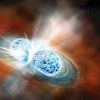 +1 +1
+1 +1Scientists witness huge cosmic crash, find origins of gold
It was a faint signal, but it told of one of the most violent acts in the universe, and it would soon reveal secrets of the cosmos, including how gold was created. Astronomers around the world reacted to the signal quickly, focusing telescopes located on every continent and even in orbit to a distant spot in the sky.
-
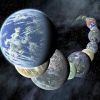 +20 +1
+20 +1Kronos: The eater of planets
The Sun has been pretty good to us here on Earth over the last billion or so years. Sure we get the occasional solar storm and some deviations from ideal temperatures. But, by and large, we have a relatively supportive parent star. It’s nothing like those poor planets that orbit the star Kronos (HD 240430), located some 350 light-years away. On September 15, a team of Princeton astronomers posted a paper on the physics pre-print site arXiv.org that argues the star Kronos devoured over a dozen of its rocky inner planets during the course of its 4 billion year lifetime.
-
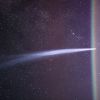 +21 +1
+21 +1We Might Have Seen the First Interstellar Comet
Last week, astronomers using the PanSTARRS 1 telescope perched on the Haleakalā volcano on the island of Maui spotted what they believe is the first comet ever detected that does not orbit the sun. The comet, designated C/2017 U1, appears to have come from the direction of the constellation Lyra, and preliminary observations indicate it has a higher eccentricity than any known comet (1.1815), suggesting it is on a hyperbolic interstellar trajectory.
-
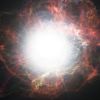 +13 +1
+13 +1A one-of-a-kind supernova was seen exploding — over and over again
In September 2014, when astronomer Iair Arcavi found a new supernova in the night sky, he didn’t think much of it. It looked like any other star that had just died and violently burst apart. The object had brightened some time ago, and now it was fading — a sign that the explosive event was coming to an end. Since the juiciest part seemed to be over, Arcavi abandoned the star in search of supernovae that had exploded more recently.
-
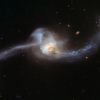 +21 +1
+21 +1These Photos From the Hubble Space Telescope Show Two Galaxies Colliding in Spectacular Fashion
Even after more than 27 years in space, the Hubble Space Telescope can still take one heck of a photo. The image above was taken earlier this year and shows two galaxies merging into one. Described by the European Space Agency and NASA as a "twisted cosmic knot" in the constellation Cancer, it's about 250 million light-years from earth.
-
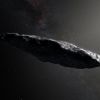 +8 +1
+8 +1It’s the 1st known interstellar asteroid
A few weeks ago, we reported on a small object visiting from beyond our solar system. Now astronomers have scrutinized data from this object, which has been given the name `Oumuamua, and which must have traveled through space for millions of years before its chance encounter with our star system. The conclusion is that it’s a dark, reddish, highly-elongated rocky or high-metal-content object. And, indeed, it is the first known asteroid from interstellar space. These new results were published today (November 20, 2017) in the peer-reviewed journal Nature.
-
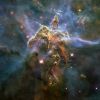 +1 +1
+1 +1These Hubble Space Telescope Photos Will Absolutely Boggle Your Mind
Taking photos of celestial bodies is no small feat. Well, taking good photos of celestial bodies, anyway... But NASA sure has perfected that art. Then again, they have the best tools in the business, including the aging, but still pretty darn good Hubble Space Telescope.
-
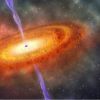 +1 +1
+1 +1Farthest monster black hole found
Astronomers have discovered the most distant "supermassive" black hole known to science. The matter-munching sinkhole is a whopping 13 billion light-years away, so far that we see it as it was a mere 690 million years after the Big Bang. But at about 800 million times the mass of our Sun, it managed to grow to a surprisingly large size in just a short time after the origin of the Universe.
-
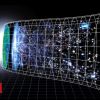 +22 +1
+22 +1Expanding cosmos hints at new physics
A mathematical discrepancy in the expansion rate of the Universe is now "pretty serious", and could point the way to a major discovery in physics, says a Nobel laureate. The most recent results suggest the inconsistency is not going away. Prof Adam Riess told BBC News that an unknown phenomenon, such as a new particle, might explain the deviation. The difference is found when comparing precise measurements of the rate obtained in different ways.
-
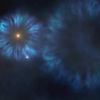 +19 +1
+19 +1Astronomers discover one of the oldest stars in the Milky Way
J0815+4729 is a star with both an extreme iron deficiency and a carbon surplus, which suggests it’s one of the oldest stars ever found in the Milky Way. In a new study published in The Astrophysical Journal Letters, a team of Spanish astronomers announced the discovery of one of the first stars to form in the Milky Way. The unevolved star, called J0815+4729, is located 7,500 light-years away in the halo of the Milky Way and likely formed just 300 million years after the Big Bang, some 13.5 billion years ago.
-
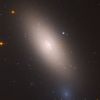 +16 +1
+16 +1Hubble Just Found a "Relic Galaxy" and It's Absolutely Stunning
NASA’s Hubble Space Telescope has uncovered a strange kind of galaxy surprisingly close to home. A new study published Monday in Nature reports that Hubble scientists have found a “relic galaxy” called NGC 1277 about 240 million light-years away near the Perseus cluster. The galaxy is only a quarter the size of the Milky Way, but in its early days, scientists think NGC 1277 could crank out stars about 1,000 times faster than our own galaxy.
-
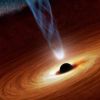 +25 +1
+25 +1NASA Saw Something Come Out Of A Black Hole For The First Time Ever
You don’t have to know a whole lot about science to know that black holes normally suck things in, not spew things out. But NASA detected something mighty bizarre at the supermassive black hole Markarian 335. Two of NASA’s space telescopes, including the Nuclear Spectroscopic Telescope Array (NuSTAR), amazingly observed a black hole’s corona “launched” away from the supermassive black hole.
-
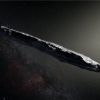 +20 +1
+20 +1Outback radio telescope listens in on interstellar visitor
A telescope in outback Western Australia has been used to listen to a mysterious cigar-shaped object that entered our Solar System late last year.
-
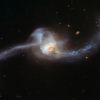 +8 +1
+8 +1These Photos From the Hubble Space Telescope Show Two Galaxies Colliding in Spectacular Fashion
Even after more than 27 years in space, the Hubble Space Telescope can still take one heck of a photo. The image above was taken earlier this year and shows two galaxies merging into one. Described by the European Space Agency and NASA as a "twisted cosmic knot" in the constellation Cancer, it's about 250 million light-years from earth. The new galaxy, called NGC 2623, has the unique knot shape because of a collision between two previously distinct galaxies.
-
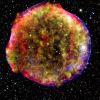 +18 +1
+18 +1The Milky Way's Speediest Stars Could Solve a 50-Year-Old Mystery
Ken Shen was racing against the sun. It was 3 A.M. on April 25 and Shen—an astronomer at the University of California, Berkeley—was sitting at his kitchen table in his pajamas. At that precise moment the scientists behind the European Space Agency’s Gaia spacecraft released the mission’s second batch of data. And Shen was on a mission to comb that data to find the Milky Way’s fastest-moving stars, then to verify their identities via independent observations on ground-based telescopes.
-
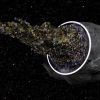 +7 +1
+7 +1What's the Minimum Number of People you Should Send in a Generational Ship to Proxima Centauri?
A team of French researchers who calculated the minimal number of people that would be needed in order to ensure that a healthy multi-generational crew could make the journey to Proxima b.
-
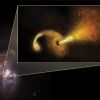 +15 +1
+15 +1Astronomers catch a black hole devouring a star
Astronomers Seppo Mattila and Miguel Pérez-Torres usually study the natural deaths of stars, but they weren’t going to pass up the chance to investigate a stellar murder. A new paper in Science describes how they nabbed photographic evidence that a supermassive black hole in a relatively nearby galaxy tore apart and consumed part of a star in a phenomenon called a tidal disruption event (TDE), spewing jets of material in the process. Scientists have observed these cosmic crime scenes before, but this was the first time anyone managed to get such detailed images of the jets and their changing structure over time.
-
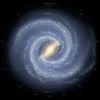 +14 +1
+14 +1The Milky Way Just Got Larger
Researchers surveyed stars, finding that the Milky Way is twice as large as previously thought.
-
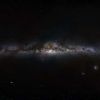 +31 +1
+31 +1The tools humanity will need for living in the year 1 trillion
Since the 1990s, astrophysicists have known that for the past few billion years, the Universe has been experiencing an accelerated rate of expansion. This gave rise to the theory that the Universe is permeated by a mysterious invisible energy known as "dark energy", which acts against gravity and is pushing the cosmos apart. In time, this energy will become the dominant force in the Universe, causing all stars and galaxies to spread beyond the cosmic horizon.
Submit a link
Start a discussion




















